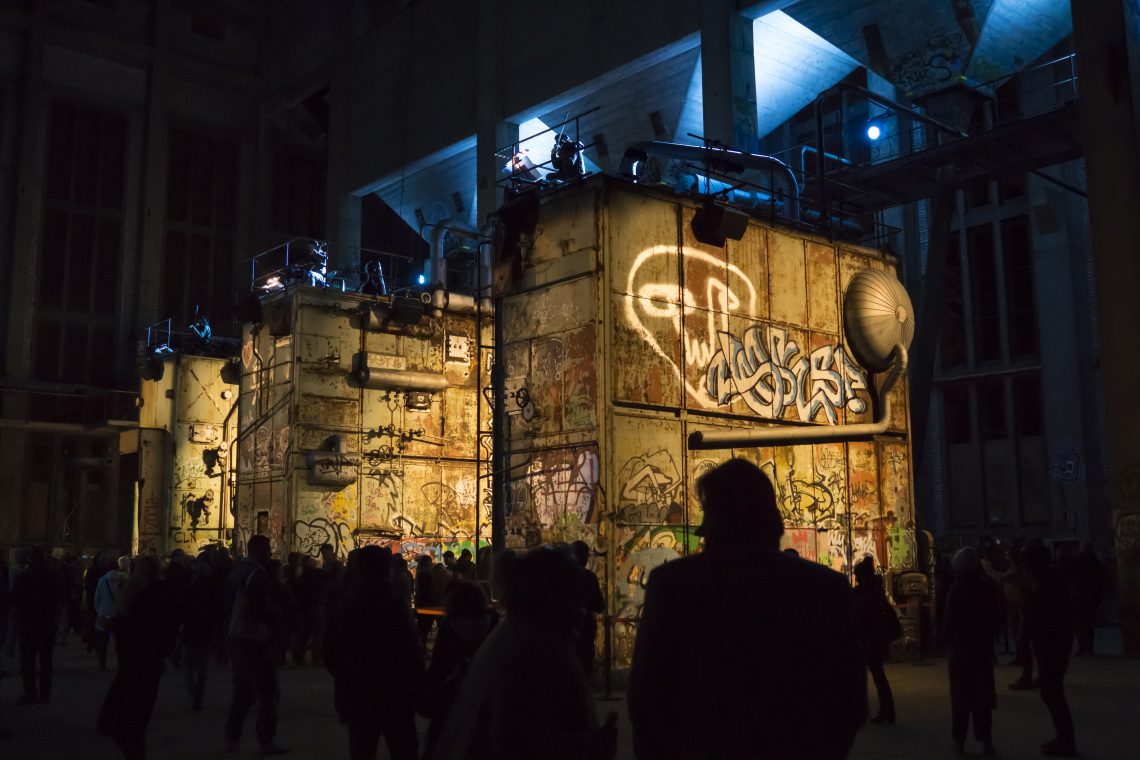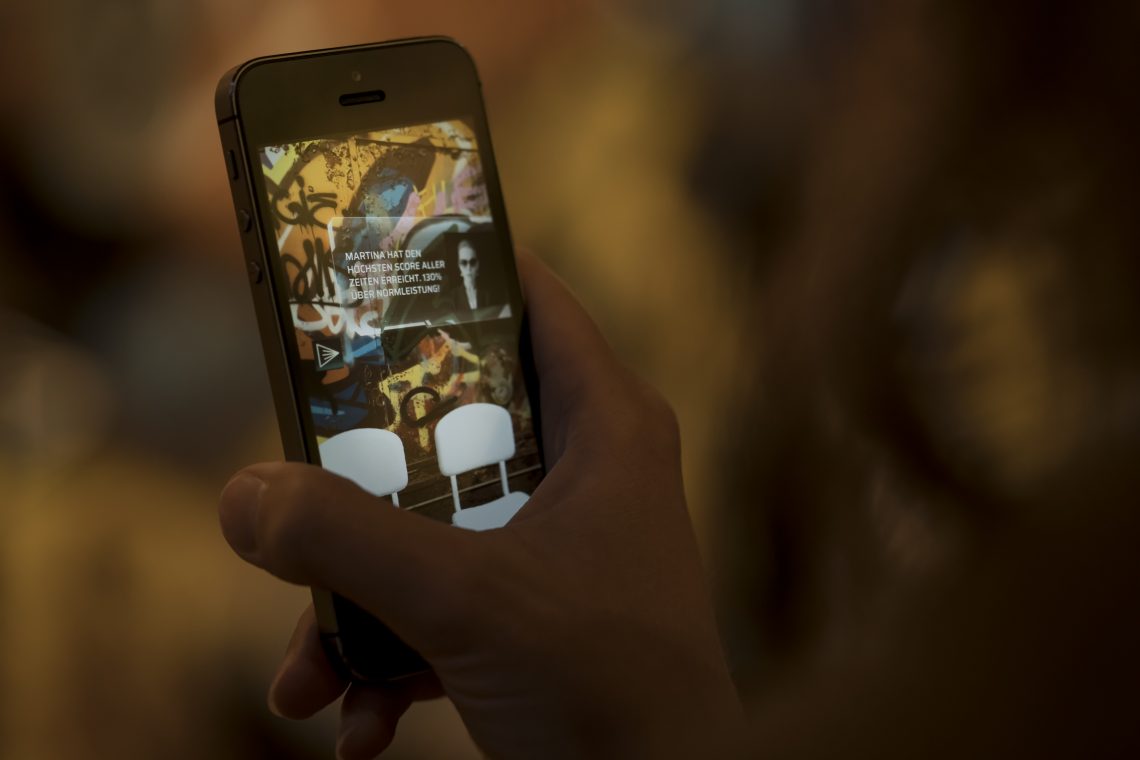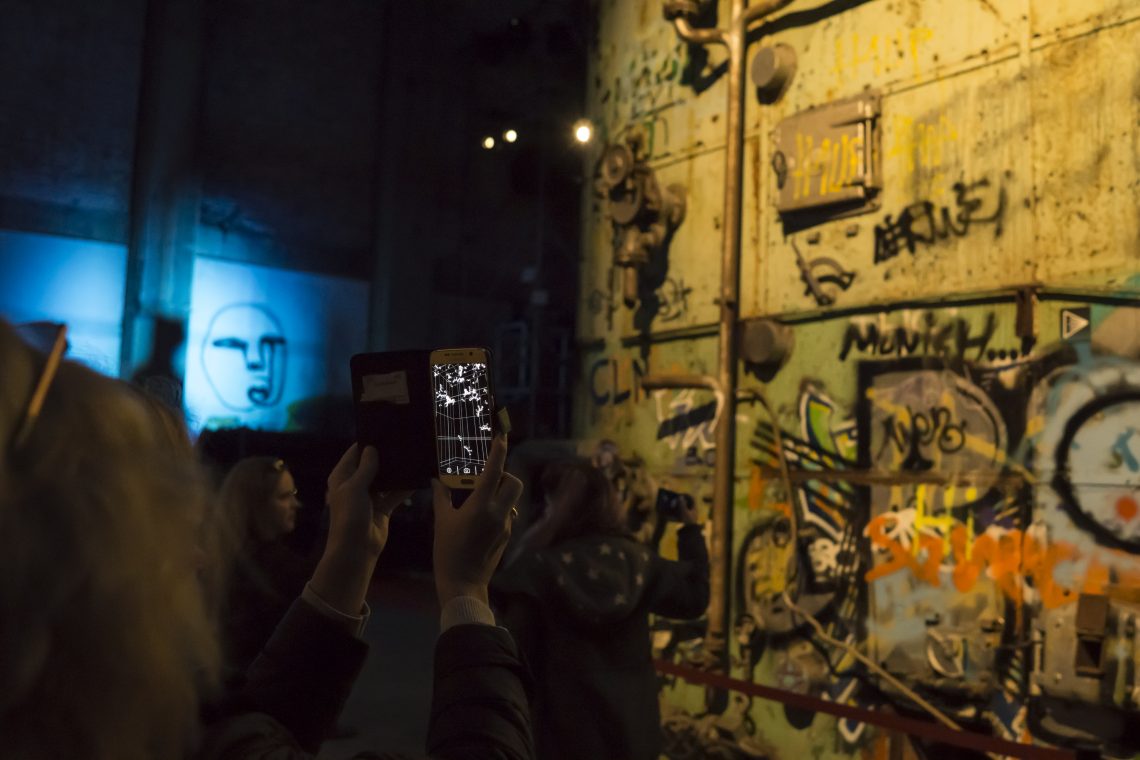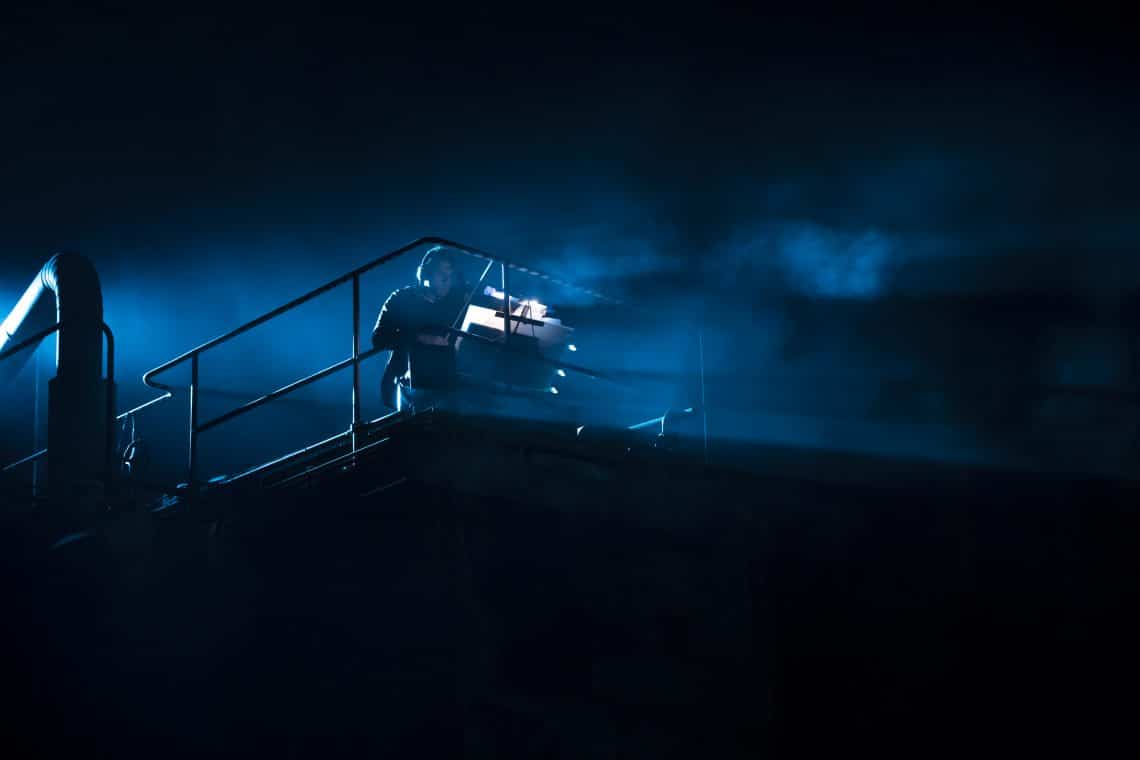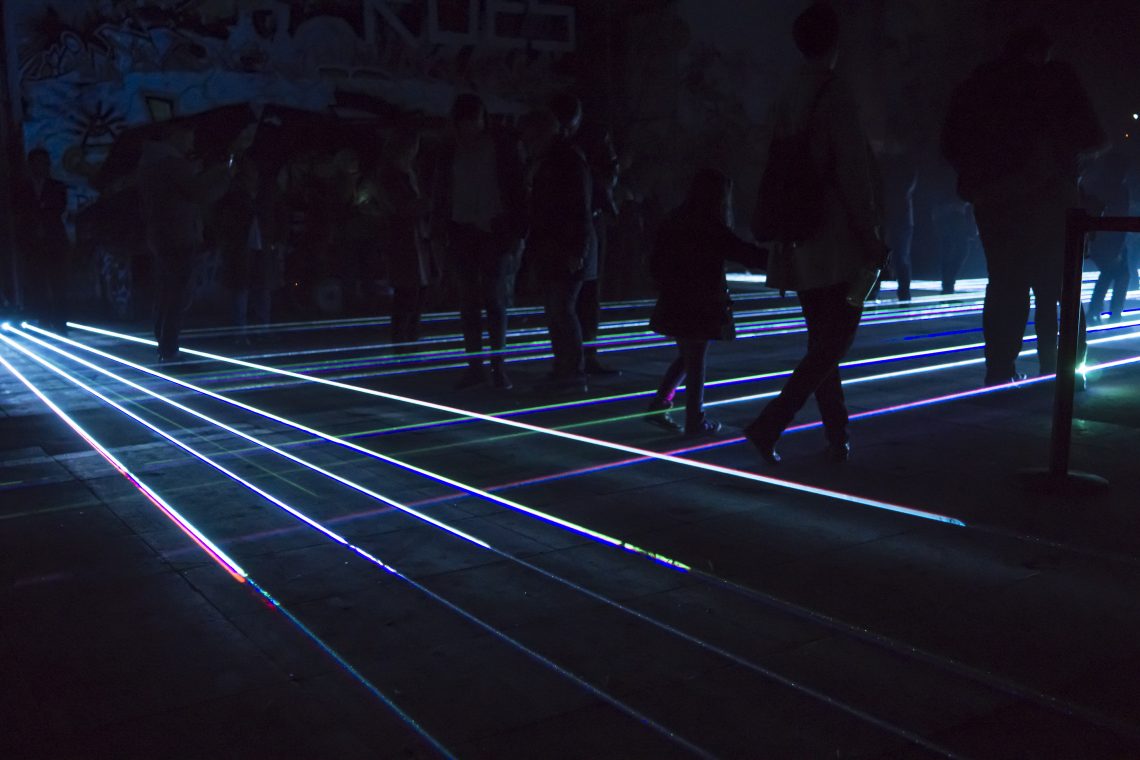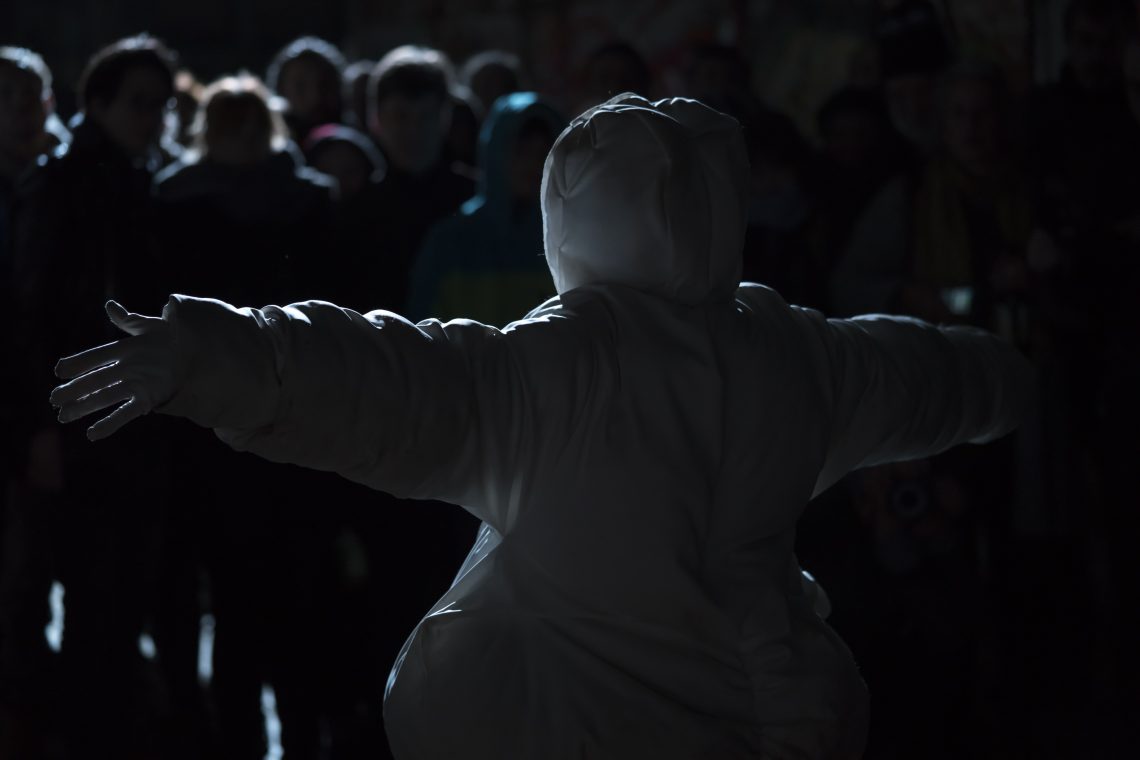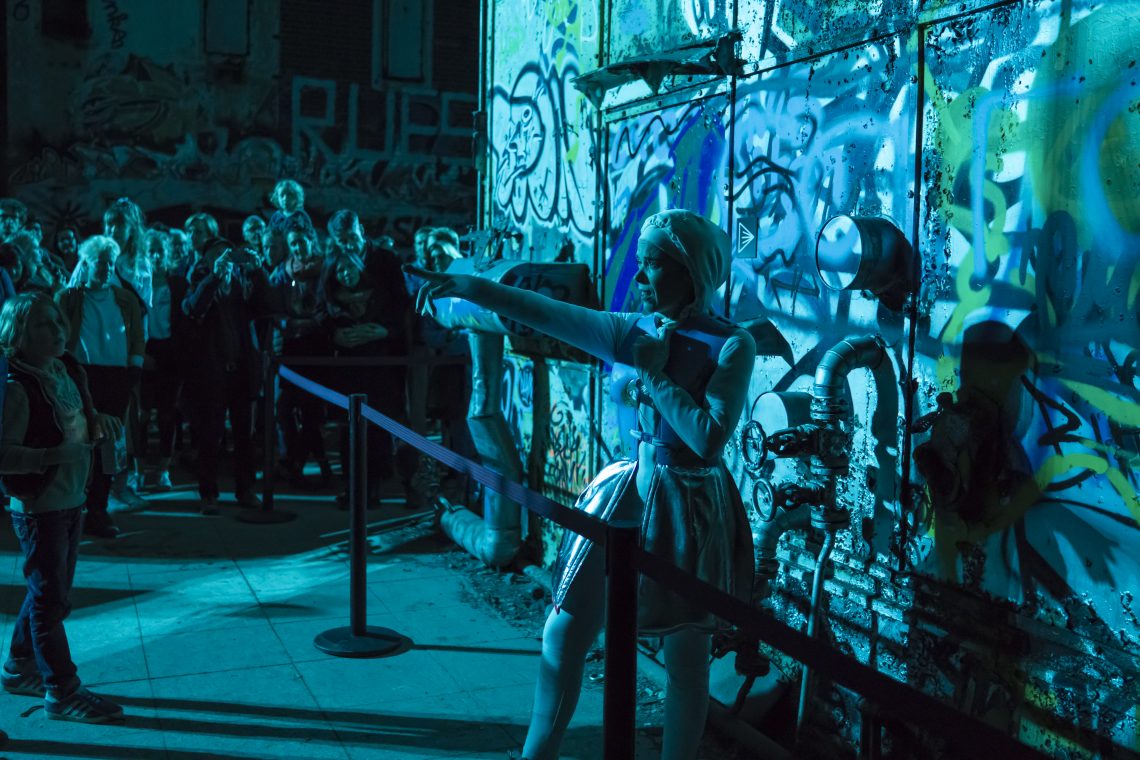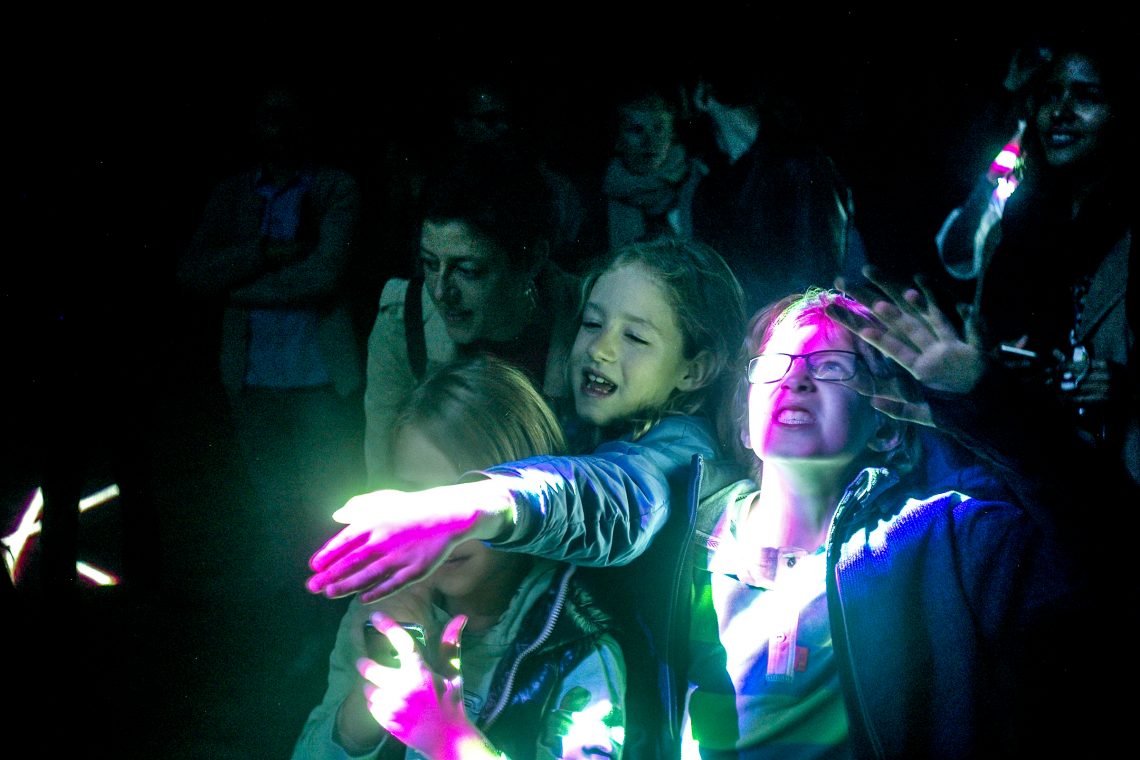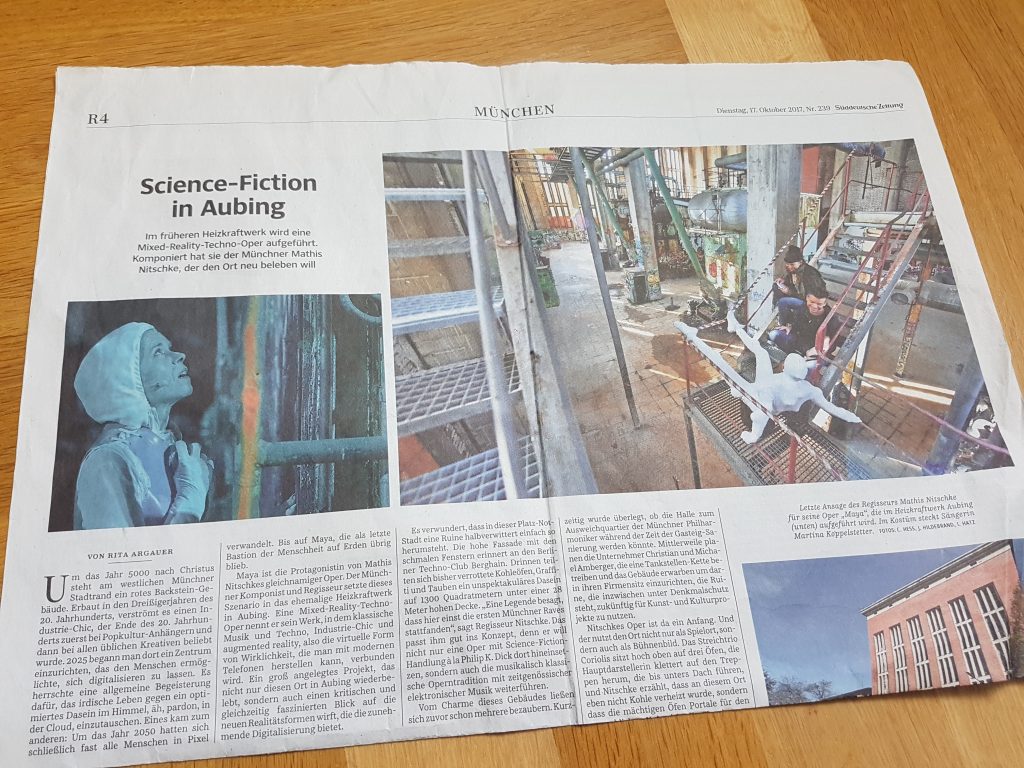As the worlds first Augmented Reality opera, MAYA staged the former heating plant Munich-Aubing as a historic site.
Through the AR-app on the own smartphone, the spectator betook himself in the perspective of a new civilization in the distant future, and looked back in amazement on the demise of our current civilization in the near future.
Singer Martina Koppelstetter took on the role of „Maya“. She was on a mission. Would she manage to rescue the Cyberspace and with it herself and the humanity?
About the MAYA App
Full Documentary
Background and creation
MAYA told the story of the last survivors of a doomed civilization. A post-utopia that was experienced by the public as a walk-in installation. It played in the last industrial ruin of Munich, the former combined heat and power plant Aubing, a listed building that also tells of failed and incomplete visions. It was built in 1937 by the Nazis on a bavarian cemetery and was to become part of a larger industrial complex for the “capital of the movement”. But that never happened. From 1952 onwards, the building was converted by Deutsche Bahn into a combined heat and power plant, but was never really used sustainably. In the 1990s, the alternative cultural scene discovered a vacancy for itself. DJs hosted legendary techno raves there. The building is currently owned by Allguth GmbH.
Before the ruin might be transformed into a new art and cultural centre in the near future, Mathis Nitschke wanted to perform in this special place with a specially conceived piece of music theatre. The breathtaking architecture of the empty building, whose interior with its three preserved stoves reminds of a cathedral, immediately fascinated him. The idea of “doing something in it” was born.
Form
MAYA transcended the core of an opera into the present: intoxication, ecstasy and extension of consciousness through music, sound, light and digital art. Opera and Techno: both stand for a powerful rebellion – against death, against loneliness. For a life without limits. For the promise of a world in which we live according to our boldest imaginations, without ever encountering physical limitations.
MAYA was a game of opposites. The future stood next to the past. Materiality encountered immateriality. New compositions met pieces from Domenico Gabrielli (16th century), Steve Reich (1967) and KP Werani (2017). The string trio TrioCoriolis played live with, against and in the electronic soundscapes of Klavikon, Jörg Hüttner, Björn Eichelbaum and Rumpeln. The lighting design by Urs Schönebaum fitted like a sculpture into the room.
“Being a peanut would be great. Or a tapeworm. Or a ramshorn snail.”
Author Thomas Jonigk put the language of a human being into the mouth of Maya, who was forced to rediscover her physicality in order to survive as a digital being.
More about the music: >>>
Result
A rich cosmos of impressions was offered, a world that the viewer could acquire through his own efforts. This wealth, which can only be explained with words and pictures in a complicated and insufficient way, was experienced locally as “great freedom”, as one of the 1,500 visitors (over five performances) called it.
All means and narrative strands were developed out of the specific location of the ruins, nothing was obviously invented on top. No props, no grandstand, no stage: a “minimally invasive” approach that made the room the main actor.
Each scene replayed the room, Maya appeared again and again somewhere else, the audience followed her in ever new configurations. Introduced by the AR app, viewers stayed in a mode of discovery, not consumption, from beginning to end.
Full Performance Video
Audience Reactions
“The audience’s involvement in the show through the app was great, especially towards the end where Maya was to be illuminated. The fact that it worked so well shows how well it did.”
“Through the building, the actors and performers I really felt like in another world. Although the windows were open, the connection to the outside world was gone for me. That felt exciting, particularly in connection with the topic itself. Together with the other visitors, it also became a special place that only we experienced in the same way.”
“I’ve never seen anything like Maya before! The mixture of modern technology, a location with an incredible atmosphere and a live concert was simply breathtaking! More of it!”
Press reactions
(selection, click for links)
MAYA
a Mixed-Reality-Techno-Opera in the ruins of the heating plant Munich-Aubing
18th – 22th October, 2017
MAYA: Martina Koppelstetter
VOICES: Michelle Friedrich, Miriam Hampe, Sophie Lin, Kathrin Zukowski
MUSICIANS: TrioCoriolis (Thomas Hofer, Klaus-Peter Werani, Hanno Simons)
LIBRETTO: Thomas Jonigk
SCENARIO, MUSIC AND DIRECTION: Mathis Nitschke
SOUNDS: Klavikon, Björn Eichelbaum, Rumpeln, Jörg Hüttner
LIGHT DESIGN: Urs Schönebaum
COSTUME DESIGN: Katharina Dobner
CHOREOGRAFIE: Martina La Ragione
APP DESIGN and PROGRAMMING: Klasien van de Zandschulp, Luciano Pinna
ANIMATIONS based on the Aquarells „Tapete I-IV“ (2012-2016) by Judith Egger
SOUND: Boris Kluska
LASER: Karl-Heinz Käs
LIGHT: Matthias Wanek
CONCEPT AND PRODUCTION: Mathis Nitschke
DIRECTOR AND PRODUCTION ASSISTENCE: Elsa Büsing
GRAPHIC DESIGN: Anja Gerscher
3D SCAN: youlittle GmbH
PR-REDAKTION: Katrin Dollinger (Rat&Tat kulturbuero)
MAYA was supported by the Cultural Department of the City of Munich, the German Federal Government’s Performing Arts Fund (Fonds Daku) and the creative industries fund The Netherlands. Kindly supported by the Kingdom of the Netherlands and the Bezirksausschuss 22 Aubing – Lochhausen – Langwied. Thanks to Allguth GmbH.
Related:
“How MAYA became an economic success” >>> How I managed to get an audience for an indie classical music-theatre piece and enjoyed applying creative entrepreneurial strategies to a publicly funded art project.
“What will MAYA actually sound like?” >>> About the musical collaboration with Leon Michener aka Klavikon, Jörg Hüttner, Anton Kaun aka Rumpeln, Björn Eichelbaum and the TrioCoriolis for the mixed reality techno opera MAYA.
As an example of my opera work on the classical theatre stage, check HAPPY HAPPY >>
For another approach to opera in public space, check VIOLA >>




